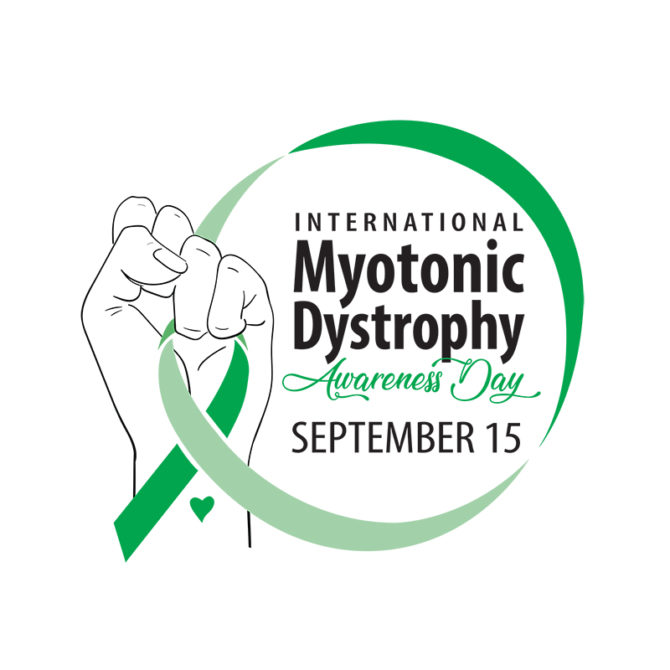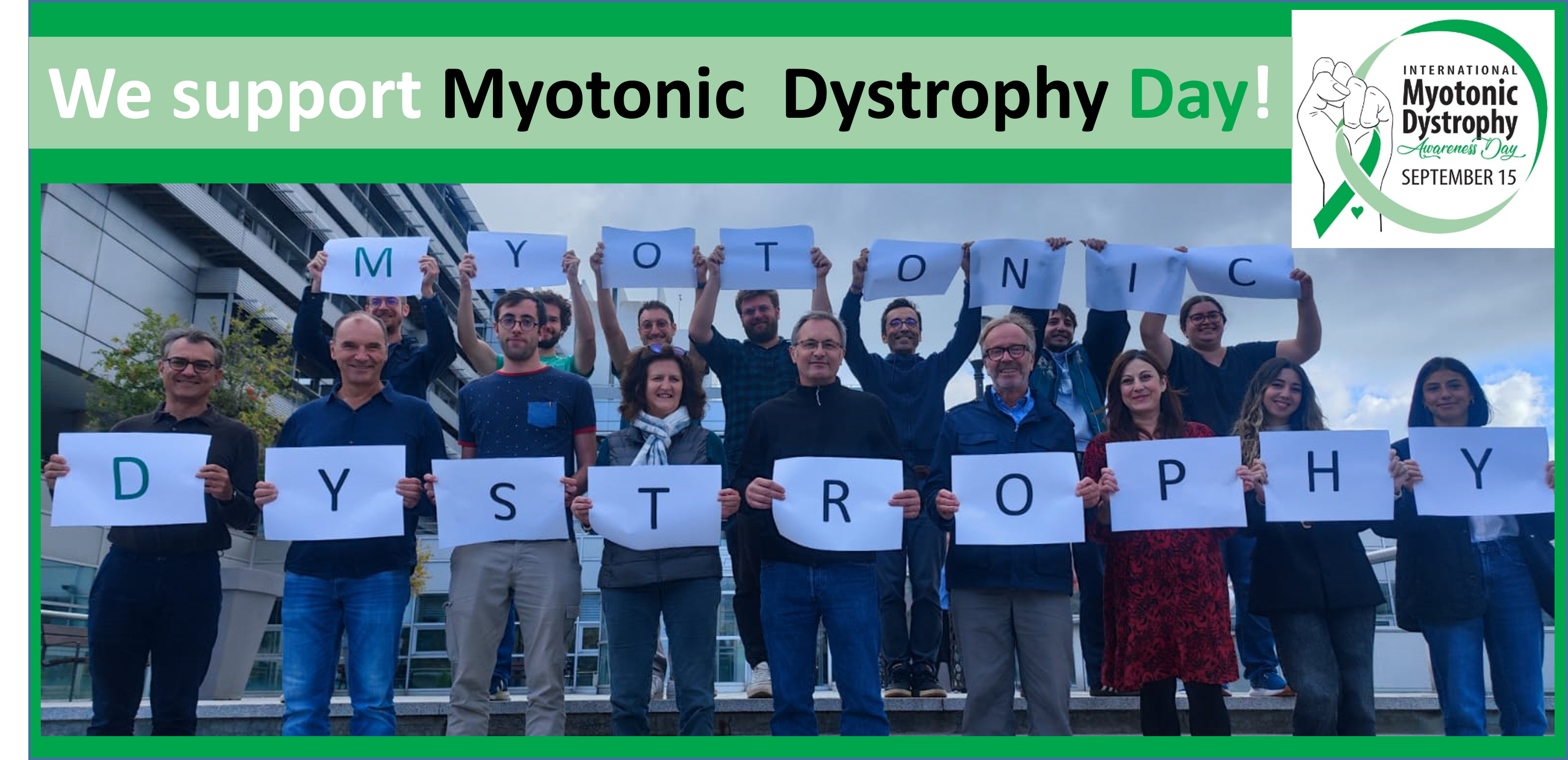
15 September is International Myotonic Dystrophy Awareness Day. Its aim is to raise awareness on this neuromuscular disease among the medical profession, politicians and the general public, in order to improve diagnosis, care and support for patients, and also to speed up the development of medicines.
This 4th edition will place particular emphasis on two specific areas: raising awareness and educating clinical care teams, and preparing participants for clinical trials.
Myotonic dystrophies
Myotonic dystrophies – myotonic dystrophy type 1 (or Steinert’s disease) and myotonic dystrophy type 2 – are rare and progressive genetic diseases. Muscles weaken (dystrophy) and have difficulty relaxing at the end of a contraction (myotonia). They are caused by abnormal repetitions of small DNA sequences that disrupt the expression of numerous proteins, with cascading effects on several organs (such as the heart, eye, respiratory and endocrine systems, digestive system or nervous system). These are multi-systemic diseases. Myotonic dystrophy type 1 (or Steinert’s disease) is one of the most common neuromuscular diseases among adults. It is estimated that one person out of 8,000 suffers from the disease, which, in terms of the French population, would correspond to between 5,000 and 8,000 patients living in France.
Type 1 and 2 myotonic dystrophies are considered complex, but research into treatments is accelerating.

At the Institute
At the Center of Research of the Institute of Myology, the REDs team, which is led by Geneviève Gourdon and Denis Furling and also includes Guillaume Bassez‘s group (who coordinates the DM-Scope national myotonic dystrophy register), is conducting research into DM1 or Steinert’s disease. Its aim is to create synergies in order to accelerate translational research into this disease and develop therapeutic alternatives for patients. The team’s skills are focused on integrated research into DM1, from mutation to understanding the pathophysiological mechanisms using cellular and animal models, to developing and evaluating innovative therapeutic approaches and, finally, setting up pre-clinical and clinical trials for this neuromuscular disease.
Further details on REDs team field of research
Ongoing clinical trials on DM at the Institute of Myology
